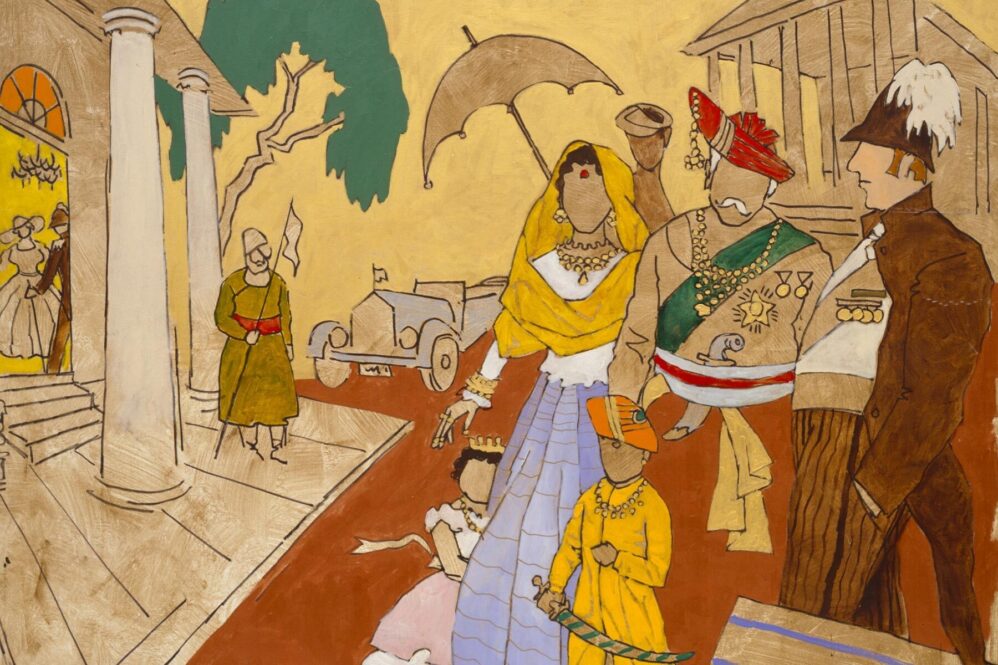
"It is a time when most are sleeping and where, on a good day, you might see a few stars shining in a pink sky in the moments before sunrise."
This is the ideal time for spiritual practice.
Robert Weingarten, 6:30 am series No. 34, photographed 2003, printed 2013. Paper, ink. Anonymous gift. © Peabody Essex Museum.
On March 19, I began making a series of short videos to share with PEM staff who want to meditate "together" in cyberspace. The aim is to sit for at least 10 minutes a day for 10 days. With so many drastic changes in all of our lives, it seems an ideal time to turn our present situation into an opportunity to go inside — physically and metaphorically — and to find solace within. I proposed this to my colleagues because I have found so much support in my own daily practice, of which sitting meditation has been an irregular part in more recent years.

I wake up each morning around 5am and immediately (!) feed Poona, my cat, and make my morning coffee. I then sit in a chair and write a full page of the Gayatri Mantra, an ancient Indian invocation to the sun that asks for its light to lead us from darkness — a metaphor for the removal of ignorance through the light of knowledge. Once that is complete, I do my Ashtanga practice (a South Indian style of yoga) for 75–90 minutes. Then I do "puja," which involves offering food, water, incense, fire and song to the gods and ancestors in the house. I am Hindu but there are all kinds of sacred forms from various traditions in my space so everyone gets a treat. When this is done, I eat the offering of food and water — considered blessed — and Poona also gets a special blessed cat treat. Silly, yes, but I love that we share that time together. Only then do I have my breakfast and get ready for work.


I understand how this might seem a bit excessive. A 3.5-hour practice before I'm ready to work. I mean, who does that?! Well, as I see it, I spend the majority of my day — as I imagine most of us do — in service to other people and various tasks. Since moving to Salem nearly two years ago, I have been working toward the opening of PEM's new South Asian galleries this summer, which will be the largest and most dynamic installation of PEM’s Indian collections. This has been a stressful and exhausting process filled with all kinds of related meetings, projects, appointments, travel, deadlines, etc., not to mention my own personal life, chores, bills and duties.
Gallery planning. Photo by Ken Sawyer/PEM.
So much of my day goes to other people and things that I have found I benefit greatly when I can have this time in the morning to and for myself. It is a time to be with myself in silence: to check in, to take care and to keep myself company. It is a moment to take stock of my thoughts and feelings. An opportunity to give thanks. And a moment to seek extra support from the vast unknown that might be out there somewhere, or might dwell inside, too.
Robert Weingarten, 6:30 am series No. 105, photographed 2003, printed 2013. Paper, ink. Anonymous gift. © Peabody Essex Museum.

I have never experienced anything quite like what we are going through collectively right now. It feels unfamiliar and disorienting. This daily practice — the one thing in life that feels stable — has given me a place from which to start each day fresh and anew. Of course, this can feel isolating and unbearably lonely at times. But what better opportunity to befriend one's self and practice enjoying one's own company?
So my hope is that those of us at PEM who have signed on to sit together will develop some strength, resilience and perhaps even build community from afar. Setting a daily practice — be it yoga, meditation, journaling, walking or running — can have so many benefits. I feel that, in many ways, I am who I am because of this practice and I'm just encouraging others to find what works best for them so they, too, might find some calm in this storm.

"It's not a terrible thing that we feel fear when faced with the unknown. It is part of being alive, something we all share. We react against the possibility of loneliness, of death, of not having anything to hold onto. Fear is a natural reaction to moving closer to the truth."
— Pema Chödrön, When Things Fall Apart: Heart Advice for Difficult Times
The PEM staff wishes everyone health, safety and calm during the COVID-19 shutdown. Museums provide light and inspiration during challenging times. We will be creative in maintaining PEM’s relationship with you in this time of crisis. We look forward to welcoming you back to the museum when the public health crisis has subsided. For more information and updates, please visit pem.org and keep in touch through our Facebook, Twitter, Instagram and YouTube.
Keep exploring
Exhibition
South Asian Art
Ongoing

Blog
What Tibetan deities can teach us about adapting to a new world
7 min read


